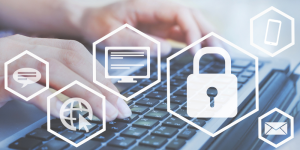Essential Updates: Social Security’s New Identity Verification Process Explained

Anúncios
Introduction to SSA’s New Security Measures
The Social Security Administration (SSA) is set to roll out new security protocols starting April 14, 2025.
These changes focus on enhanced identity verification measures tailored specifically to protect Social Security records and benefits against fraud.
Anúncios
The updated protocols involve mandatory in-person identity proofing for individuals who cannot use personal accounts for services like Retirement, Survivors, or Auxiliary benefits.
Why These Changes Are Being Implemented
The SSA is implementing these changes to address rising concerns related to identity fraud.
Anúncios
By strengthening identity verification procedures, the SSA aims to better safeguard the benefits and personal information of millions of Americans.
Fraudulent activities targeting Social Security benefits have increased, leading to significant losses and legal challenges.
Responding to feedback from customers, Congress, and various advocacy groups, the SSA is committed to improving its security measures to offer better protection and service.
Protection of Records and Benefits
The new measures will primarily focus on ensuring that the rightful recipients receive their benefits without falling prey to fraudulent schemes.
In-person identity proofing, while more stringent, provides a robust method of verifying individuals’ identities, thereby reducing the chances of fraud.
These steps are crucial to maintaining the integrity of Social Security programs and ensuring that benefits are delivered accurately and securely.
SSA Acting Commissioner, Lee Dudek, emphasized the agency’s commitment to providing better customer service to vulnerable populations, stating, “We have listened to our customers, Congress, advocates, and others, and we are updating our policy to provide better customer service to the country’s most vulnerable populations”.
This approach signifies the balance SSA aims to strike between security and accessibility.
As SSA introduces these measures, nearly all SSA employees will return to a five-day in-office work schedule to ensure maximum staffing availability.
This change supports the enhanced identity proofing efforts, assuring timely service and assistance to claimants.
While these updated protocols will undoubtedly enhance security and protect against fraud, the agency remains vigilant in monitoring their effectiveness and making necessary adjustments.
The focus is on paying the right person the right amount, thus maintaining the integrity of Social Security records and benefits.

Key Changes to Identity Verification Requirements
Starting April 14, 2025, the Social Security Administration (SSA) is updating its identity verification protocols to enhance security and prevent fraud.
These changes are pivotal for individuals applying for Retirement, Survivors, and Auxiliary (Spouse or Child) benefits.
In-Person Identity Proofing Requirements
The new measures mandate that applicants who cannot use their online personal account must complete in-person identity proofing at a Social Security office.
This ensures that individuals are verified securely and accurately.
Those reluctant or unable to navigate online services will need to schedule an appointment and provide necessary documentation in person.
This step is crucial in combating identity fraud and securing Social Security benefits.
Benefits Requiring In-Person Verification
Applicants seeking the following benefits will need to undergo in-person verification:
- Retirement
- Survivors
- Auxiliary (Spouse or Child) benefits
Exempt Applications
Not all applications are subject to this requirement. The SSA has made accommodations for those applying for:
- Medicare
- Disability Insurance (SSDI)
- Supplemental Security Income (SSI)
These applications can still be processed via phone for those who cannot use their personal online account.
By exempting these categories, the SSA aims to reduce the burden on individuals in critical need while still maintaining robust security measures.
As individuals begin to navigate these new protocols, the SSA remains committed to safeguarding benefits while making the process as accessible as possible for those who need it most.
These changes reflect a balanced approach, ensuring the integrity of Social Security systems without hindering access for vulnerable populations.
Exceptions and Special Circumstances
As of April 14, 2025, new identity verification procedures will be in effect for Social Security benefits.
However, the SSA recognizes that certain circumstances necessitate flexibility.
Here we’ll outline exceptions for extreme need, accommodations for specific cases, and the process for bypassing identity verification.
Extreme Dire-Need Situations
The SSA acknowledges that some individuals may find it impossible to meet the new in-person identity proofing requirements due to extreme circumstances.
To prioritize the needs of the most vulnerable, exceptions will be made in particular dire-need situations.
This includes individuals who are critically ill, such as those receiving end-of-life care, as well as those experiencing other urgent scenarios that prevent them from visiting a Social Security office.
Terminal Cases and Prisoner Pre-Release Scenarios
Special accommodations are also in place for terminal cases.
Individuals with a terminal illness, who are often under immense stress and physical limitations, will be able to bypass the in-person identity verification process.
SSA aims to reduce the burden on these individuals, who already face significant challenges.
Similarly, prisoners on the verge of release have unique constraints that make in-person verification impractical.
The SSA will facilitate identity verification for these individuals through alternative means to ensure seamless access to their benefits upon release.
Documentation and Approval Process
For those who qualify to bypass the standard identity verification process, proper documentation and approval will be required.
Applicants must provide substantial proof of their situation to support their request for an exemption.
This may include medical records, legal documents, or statements from professionals who can vouch for the individual’s dire need.
Approval for bypassing the identity verification process will be granted on a case-by-case basis.
SSA managers will review requests to ensure that only those in genuine need receive these accommodations.
Applicants are encouraged to gather and present all necessary documentation to streamline the approval process.
Understanding these exceptions and preparing the required documentation in advance will ensure individuals in exceptional circumstances can still access their Social Security benefits without undue hardship.
With these measures in place, the SSA balances enhanced security protocols with compassion, ensuring those in critical need are not left behind.
This approach underscores their commitment to safeguarding benefits while maintaining accessibility.
| Scenario | Before Changes | After Changes (New Process) |
|---|---|---|
| 💻 Online Process | Limited online options for direct deposit changes | Preferred method is through your my Social Security account for secure changes |
| 📞 Phone & In-Person Options | In-person visits without scheduling may lead to long waits | Call SSA at 1-800-772-1213 or visit local SSA offices for scheduled in-person appointments |
| 📅 Scheduling Appointments | No prior scheduling necessary for in-person visits | Pre-schedule your visit via phone to avoid long queues |
| 📑 Documentation | Minimal documentation needed | Bring required documents: government-issued ID, Social Security card, and bank information |
| 🔒 Security Measures | Basic security measures in place for updating information | Updated process to ensure secure and efficient handling of direct deposit changes |
Preparing for Your Social Security Office Visit
Scheduling Your Appointment
Efficiently scheduling your appointment can save you time and hassle.
The Social Security Administration (SSA) requires that you schedule your in-person appointment by calling 1-800-772-1213 or visiting a local SSA office.
It’s essential to book your appointment as early as possible to ensure your preferred date and time.
Peak times are typically early mornings and late afternoons, so mid-days often have shorter wait times.
Essential Documents for Verification
When you’re preparing for your visit, make sure you have all your necessary documents for identity verification. Here’s what you commonly need:
- Government-issued photo ID: This can be a driver’s license, state ID, or passport.
- Social Security card: If you don’t have your card, other proofs of your Social Security number may be acceptable.
- Birth certificate: A certified copy is usually required.
- Proof of residence: Utility bills, lease agreement, or mortgage statements can serve this purpose.
- Benefit documentation: If applicable, bring any correspondence from the SSA that pertains to your benefits.
Expectations for Completing Applications
When you visit the SSA office, expect to have your identity verified during your appointment.
For those applying for Retirement, Survivors, or Auxiliary (Spouse or Child) benefits, being well-prepared can help you complete your application in one visit.
To streamline the process:
- Ensure all documents are in order: Double-check the required documents and that they are legitimate and up-to-date.
- Complete any pre-application forms: If possible, fill out any forms provided online before your appointment.
- Ask questions: SSA staff are there to help. If you’re uncertain about any part of your application or the process, don’t hesitate to ask.
- Stay patient: The office can be busy, but starting your process early helps ensure everything goes smoothly.
With these steps, you can efficiently navigate your visit and get the assistance you need.
The SSA is working hard to implement these new measures to better protect your benefits and records from fraudulent activities.
Make sure to stay informed about future updates so you can continue to receive the best possible service.
SSA’s Operational Changes to Support New Requirements
Starting April 14, 2025, the Social Security Administration (SSA) will undergo significant operational changes to support the enhanced identity verification measures aimed at combating fraudulent activities.
Here are the key updates to help you navigate these changes effectively.
Employees Returning to Five-Day In-Office Work Schedules
To ensure maximum availability and efficiency in handling the new in-person identity proofing requirements, nearly all SSA employees, including frontline staff, will return to working in-office five days a week.
This move guarantees that applicants receive timely assistance and adequate support during their visits.
Increased Staffing to Support Verification Processes
With the return of employees to full-time office work, the SSA will be better equipped to manage the influx of in-person verifications for claims such as Retirement, Survivors, and Auxiliary benefits.
The increased staffing will help minimize waiting times and enhance customer service, ensuring that individuals can complete their identity verification seamlessly.
Implementation of Account Verification Service (AVS)
One of the most significant developments in SSA’s strategy to prevent fraud is the planned implementation of the Department of Treasury’s Bureau of Fiscal Service’s Account Verification Service (AVS).
The AVS provides instant bank verification services, proactively checking the validity of bank accounts used for direct deposit requests.
This initiative will significantly reduce the risk of fraudulent direct deposit changes, safeguarding benefits from unauthorized access and alterations.
These operational changes reflect SSA’s commitment to enhancing security and ensuring the integrity of Social Security benefits for all Americans.
Future Developments and Monitoring
SSA’s Commitment to Monitoring the Effectiveness of New Security Measures
Beginning April 14, 2025, the Social Security Administration (SSA) will roll out new security protocols designed to safeguard the records and benefits of Americans.
These steps are essential to protect against increasing fraudulent activities. But, implementing these measures isn’t the end of the story.
The SSA is committed to continuously monitoring the effectiveness of these protocols to ensure they provide the necessary security without overly complicating the process for users.
The SSA will actively track various metrics related to the new procedures, including incidents of fraud and customer satisfaction.
Regular reviews will help identify any weaknesses or areas needing improvement.
By staying vigilant, the SSA can make timely adjustments to maintain the security of Social Security benefits while ensuring a smooth user experience.
Potential Adjustments to Balance Security and Accessibility
While robust security is vital, it shouldn’t come at the expense of accessibility.
The SSA understands this balance and is prepared to make necessary adjustments. If new identity verification processes create unexpected hurdles for beneficiaries, the SSA will evaluate and modify them accordingly.
Flexibility in adapting these protocols will help ensure that all eligible individuals can access their benefits without undue hardship.
For instance, the SSA may consider additional exemptions or alternative verification methods for those who face significant challenges with the new requirements.
Such adjustments will be a testament to the SSA’s dedication to both security and providing excellent customer service.
Ongoing Efforts to Combat Fraud and Maintain Quality Customer Service
The SSA’s fight against fraud is ongoing. Beyond the initial implementation of new security measures, the agency will introduce specific tools, such as the Account Verification Service (AVS), to enhance fraud detection and prevention.
AVS will provide instantaneous bank verification, preventing fraud associated with direct deposit change requests.
Furthermore, the SSA’s employees, now back on a five-day in-office schedule, are better equipped to handle the increased demands of in-person verification.
The improved staffing levels will help manage the additional workload and maintain high service standards.
By continuously monitoring and adjusting its policies, the SSA is devoted to protecting Social Security benefits from fraud while ensuring beneficiaries receive the support they need efficiently and securely.
This ongoing commitment will ensure that the enhanced security measures serve their purpose without becoming a barrier to service.






